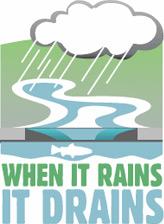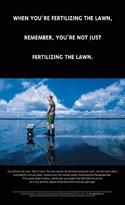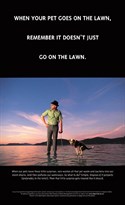Stormwater Management

Upper Gwynedd Township drafted a Combined Total Maximum Daily Load and Pollutant Reduction Plan as part of our NPDES requirements. The plan estimates the pollutant loads generated by existing land cover within the Township and provides a 5 year plan to reduce the loads as the permit requires. The Township is requesting public comment on this plan, and comment will be open until July 25, 2019. Please submit written comments to the township at 1 Parkside Place, North Wales, PA 19454. To download the plan please click here.
Upper Gwynedd Township, along with all municipalities, are required by the Pennsylvania Department of Environmental Protection (PaDEP) to address stormwater issues using public education as well as a variety of best management practices or BMP's. The US Environmental Protection Agency (EPA) has established minimal standards for stormwater management that are the basis for the PaDEP's MS4 Stormwater Management Program Protocols. "MS4" stands for Municipal Separate Storm Sewer System and refers to communities within urbanized or urbanizing areas with municipally managed storm sewer systems. The MS4 protocol provides detailed plans for developing and implementing a municipal stormwater management program. Six Minimum Control Measures outline actions that local MS4 municipalities must take to comply with state and federal regulations. They are as follows:
- Minimum Control Measures
- MCM#1- EPA Fact Sheet - Public education and outreach
- MCM#2- EPA Fact Sheet - Public participation and involvement
- MCM#3- EPA Fact Sheet - Illicit discharge detection and elimination
- MCM#4- EPA Fact Sheet - Construction site stormwater runoff
- MCM#5- EPA Fact Sheet - Post-construction stormwater management in new development and redevelopment
- MCM#6- EPA Fact Sheet - Pollution Prevention and good housekeeping for municipal operations and maintenance
What Is Stormwater?
Stormwater is water from rain and melted snow that flows across the ground into the storm sewers found at low points and along the sides of streets. The stormwater flows through a system of pipes and roadside ditches that make up the storm sewer system. The water eventually finds its way to lakes, rivers, streams, wetlands, and the ocean.
What's The Problem?
Stormwater becomes a problem when it picks up debris, chemicals, dirt and other pollutants which end up in our receiving waters that we use for drinking water and recreation.
What Can You Do To Help?
Properly dispose of hazardous substances such as used oil, cleaning supplies and paint.
Please contact the Montgomery County Hazardous Waste Recycling Program for collection dates and locations. Call 610-278-3618 or visit their website: Montgomery County Hazardous Waste
Use pesticides, fertilizers, and herbicides properly and efficiently to prevent excess runoff. Avoid blowing grass clippings and leaves into the street. Help keep storm inlets clear of trash and other debris.
Look for signs and other pollutants, such as debris and chemicals, leaving in stormwater runoff or tracked onto roads by construction vehicles. Report poorly managed construction sites that could impact stormwater runoff to our community.
Pick up after your pets and dispose of their waste properly.
Report any discharges from storm system outfalls during times of dry weather. This is a sign that there could be a problem with the storm sewer system.
Install innovative stormwater practices on residential property, such as rain barrels or rain gardens, that capture stormwater and keep it on site instead of letting it drain away into the stormwater system.
For more information: https://www.epa.gov/greeningepa/epa-facility-stormwater-management
To view the Upper Gwynedd Township Stormwater Ordinance click Stormwater Management
Upper Gwynedd Township is in partnership with the Perkiomen Watershed Conservancy and the Wissahickon Valley Watershed. You can visit their websites at: www.perkiomenwatershed.org, or www.wvwa.org
Construction Industry Information
The construction industry has a key role to play in storm water management. As storm water flows over a construction site, it can pick up pollutants such as sediment, debris, and chemicals. Uncontrolled erosion has a significant financial impact on a construction project. It costs time and money to repair gullies, replace vegetation, clean sediment clogged storm drains, and mitigate damage to other people's property.
Installing and maintaining pollution prevention techniques on site can reduce the potential for storm water pollution and help protect our nation's water supply.
Protect Natural Features By:
Minimizing the amount of exposed soil, because the less soil that is exposed the easier and cheaper it will be to control erosion. Sequence construction activities so that the soil is not exposed for long periods. Schedule site stabilization activities such as landscaping to be completed as quickly as possible after the land has been graded to the final contour.
- Identify and protect areas where existing vegetation such as trees will not be disturbed by construction activity.
- Protect streams, wild woodlands, wetlands, and other sensitive areas from any disturbance or construction activity by fencing or otherwise clearly marking those areas.
- Silt Fencing Inspect and maintain silt fences after each rainstorm. Make sure that the bottom of the silt fence is buried in the ground. Securely attach the material to the stakes.
- Construction Entrances
- Make sure the construction entrance doesn't become buried in soil. Regular street sweeping at construction entrance will prevent dirt from entering storm drains.
Visit the http://water.epa.gov/polwaste/npdes/stormwater/index.cfm web site for stormwater management related construction permit applications and other information. Other important links are listed at the bottom of this web page.
Cold Weather Suggestions
Salt and sand have traditionally been perceived as the cheapest and most effective materials for de-icing surfaces such as highways, walkways, and parking lots. However, many people do not realize that many of these products have hidden impacts. When the ice melts, the salt and chemicals dissolve and flow into street drains that lead directly to a stream in our watershed. Depending on the product used, these impacts can range from creating dangerous changes in water salinity, to reducing oxygen levels in our streams and rivers, to "burning" or killing vegetation along sidewalks and roadsides, to damaging concrete and carpets, to increasing sediment and phosphorus levels and introducing toxic chemicals such as cyanide, chlorine or ammonia in our streams and rivers.
Put Your Sidewalk and Driveway On a Low Salt Diet
Keeping ice and snow off your driveway and sidewalks is important for safety. The following tips can help you choose the best deicing product for your home and the environment.
1. Buy Early. Make sure to buy your deicing product well before the big storm hits; otherwise, you could be looking at empty shelves and have few, if any, environmental choices to make at the store.
2. Check the Label. The table below provides a summary of the pros and cons of the various main ingredients of common deicing products. Check the package label closely to see what you are buying. Experts recommend using calcium chloride over sodium chloride (rock salt).
Check the Label For: | Works Down to: | Cost is: | Environmental Impacts |
|---|---|---|---|
Calcium Magnesium Acetate (CMA) | 22°F to 25°F | 20x more than rock salt | (+) Less toxic |
Calcium Chloride (CaCl) | -25°F | 3x more than rock salt | (+) Can use lower doses; |
Urea (Fertilizer) | 20°F to 25°F | 5x more than rock salt | (+) Less corrosion; (-) Adds needless nutrients |
| Sand | No melting effect | $3 for a 50 lb. bag | (-) Accumulates in streets and streams as sediment (-) Forms microparticles that become airborne and pollute the air. Microparticles are breathable and can affect people with respiratory problems. |
Sodium Chloride (NaCl), aka rock salt | 15°F | $5 for a 50 lb. bag | (-) Contains cyanide; (-) Chloride impact |
3. Avoid Kitty Litter and Ashes. Although these products are environmentally friendly, they aren't very effective. While they provide some traction, they do not melt snow and ice. Also, they tend to get real gooey and messy when it warms up, which often tracks in to the floors of your home. If traction is what you want, then stick with sand, which is much cheaper and easier to sweep up.
4. Shovel Early and Often. When it comes to snow removal, there is no substitute for muscle and elbow grease. Deicers work best when there is only a thin layer of snow or ice that must be melted. Get out the snow shovel and move as much snow as you can during the storm. A flat hoe can also help to scrape ice off the surface before any deicers are applied. Be careful when chopping the ice build-up that you don't damage your sidewalk. Also, be careful when shoveling snow. Snow is heavy and overexertion can lead to heart attacks.
5. Know Your Salt Risk Zone. You wouldn't want to kill your favorite tree, shrub or grass, so check out the plants that grow within five or ten feet of your driveway and sidewalk (and the road, for that matter). The table below summarizes some of the salt sensitive plants that might be at risk. If you have salt-sensitive trees, shrubs or grasses in this zone, you should avoid any deicing product that contains chlorides (rock salt and calcium chloride), or use very small doses. You may want to use CMA as a safer alternative, or stick with sand for traction.
Landscaping Areas | Species at Risk from Salting |
|---|---|
Deciduous Trees | Tulip Polar, Green Ash, Hickory, Red Maple, Sugar Maple |
Conifers | Balsam Fir, White Pine, Hemlock, Norway Spruce |
| Shrubs | Dogwood, Redbud, Hawthorn, Rose, Spirea |
Grasses | Kentucky Bluegrass, Red Fescue |
6. Avoid Products that Contain Urea. Some folks recommend the use of urea as a safer alternative to more common deicing products, arguing that it does not contain chlorides and, as a form of nitrogen, will help fertilize your yard when it washes off. In reality, urea-based deicing products are a poor choice. To begin with, urea is fairly expensive and performs poorly when temperatures drop below 20°F. More importantly, the application rate for urea during a single deicing is ten times greater than that needed to fertilize the same area of your yard. Of course, very little of the urea will actually get to your lawn, but will end up washing into the street and storm drain. Given that nitrogen is a major problem for our waterways, it doesn't make sense to use nitrogen-based products, such as those containing urea, for deicing.
7. Apply Salt Early, but Sparingly. Remember that "A little salt goes a long way." The recommended application rate for rock salt is about a handful per square yard treated (after you have scraped as much ice and snow as possible). Using more salt than this won't speed up the melting process. Even less salt is needed if you are using calcium chloride (about a handful for every three square yards treated - or about the area of a single bed). If you have a choice, pick calcium chloride over sodium chloride. Calcium chloride works at much lower temperatures and is applied at a much lower rate.
8. After ice/pavement bond is broken, remove the remaining slush by shoveling.
Limit access to your home to one entrance. For every doorway that is not used, there will be less deicer running into the catch basin in your street.
Our Environment Begins With Your Yard
The U.S. Environmental Protection Agency and the U.S. Botanic Garden produced a 9-minute on-line video, "Reduce Runoff: Slow It Down, Spread It Out, Soak It In" that highlights green techniques such as rain gardens, green roofs and rain barrels to help manage stormwater runoff.
This information was adapted from "Backyard Stewardship, Our Environment Begins With Your Yard," a pamphlet produced by the Virginia Department of Forestry and the City of Virginia Beach and by the NRCS, Connecticut.
What you do in and with your yard can end up outside your yard, in your neighbor's yard, in the storm drain or stream, and eventually in the ocean. If you multiply what you do in your yard by the number of people on your street, in your town, or in your state, your yard starts to look like everybody's business. The environment really does begin with your yard!
A clean, well-maintained yard looks good. Those who pass by may comment on how beautiful your yard looks, how the neighborhood seems like a great place to live, and how the property values are enhanced by appearances. Those around you are proud to have you as a neighbor. The plants in your yard and your neighbor's yard, in the woods down the street, in the public park next door, all give off oxygen to help us breathe. They keep the air fresh and clean. Also, plants help to cool the environment by providing shade. Ground covers and other plants hold your soil in place. The soil doesn't wash away, doesn't flow into your neighbor's yard, doesn't clog storm drains and streams, and doesn't carry along pesticides and nutrients that pollute the water. Your yard can be home to many birds, butterflies, and animals that are interesting to observe and can help control pests.
Learn About Your Soil
- Not all soils are created equal. Soils have characteristics that make them different and affect their suitability for various uses. Knowledge of soil types and their features can help you solve current problems and avoid future ones.
- Texture - Soil particles vary from coarse to fine, and are classified as sand, silt, or clay. The percentage in each soil determines its texture. Soil texture influences other soil properties such as how readily water moves through the soil and its ability to hold moisture for plant growth.
- Slope - This is the inclination or steepness of the land's surface. Land disturbance that is planned with the slope of the land in mind can prevent erosion and reduce costs.
- Depth to Water Table - How high the water table rises and how long it stays there will affect what can be done on the soil. A high water table soil can lead to wet basements, cause septic systems to fail, and restrict landscape plant selection.
- Depth to Bedrock - The depth from the soil surface to bedrock influences a soil's potential uses by restricting or increasing the cost of construction.
- Things You Can Do - Learn more about the potential for different uses on your property in a soil survey report. A soil survey is an inventory of the soils of a particular region. It includes soil maps showing the location of the dominant soils and the descriptions and interpretations of the soils
Learn about Erosion and Sediment Control
Soil erosion is the process by which rainfall and moving surface water dislodge and carry soil particles, organic matter, and plant nutrients with them. Erosion around a home not only causes damage to your property and nearby roads, but also affects water quality in ponds, lakes, or streams. Muddy water flowing in your driveway, ditch, or onto the road following a rain indicates that erosion is occurring.
Sedimentation is the depositing of soil from muddy water. The eroded soil stops someplace as sediment- filling ditches, streams, lakes, and shipping channels at considerable cost to taxpayers. The best way to reduce sedimentation is to control erosion by using vegetative cover, or applying stone, straw, and fabric filters to trap soil particles. In larger flows, water is held in temporary storage basins until most of the soil settles out of the water. Here are some things you can do:
Keep the soil covered. Bare soil is the primary cause of erosion. Plant grass or other vegetation to protect the soil from the impact of raindrops and to hold the soil in place. Mulch bare areas with straw, grass clippings, stones, wood chips, and other protective cover. Vegetated and mulched areas increase soil infiltration, reducing erosive runoff water.
Control concentrated flow. Watch the flow of runoff water during storms. Areas of concentrated flow on slopes should be protected by keeping the channel in grass on gentle slopes and lining the channel with stones or pavement on steeper slopes. Building terraces across the slope will help to divert water away from slopes. Use splash blocks at gutter outlets.
Select plants that grow well in the local areas and are suitable for the climate conditions in your yard, such as shaded or sunny areas and wet or dry soil. Plant ground covers in shaded areas where grass is difficult to establish and maintain.
Learn About Rain Gardens: https://extension.psu.edu/an-introduction-to-rain-gardens
Learn How to Control Storm Water
You have a direct link from your property to nearby lakes and streams. The path of water running off sidewalks and driveways goes through street gutters and storm sewers into a nearby stream, lake, or wetland. The muddy water runoff joins with other runoff, and at times results in damaging floods further downstream.
By-products of our everyday life, such as motor oil, antifreeze, road salt, soil, pet waste, fertilizers, and pesticides can get into water and affect its quality. Keeping storm water runoff clean reduces the pollutants that enter the public water supply. Here are some things you can do:
- Sweep fertilizer, soil, and lawn clippings off driveways and walks back onto the lawn.
- Dispose of pet wastes by burying or flushing down the toilet.
- Keep gutters and storm water inlets clear of trash, lawn clippings, and leaves.
- Contact your municipality for proper disposal instructions for hazardous materials such as pesticides, auto fluids, and household cleaners.
- Plant trees, shrubs, and groundcover to help rainwater soak into the ground.
- Limit the amount of paved surfaces on your property. Instead, use porous pavements such as bricks, interlocking blocks, gravel, or porous asphalt. Building roofs, concrete, and blacktop have total runoff.
- If concrete or blacktop are used, grade it so runoff flows to the lawn. Gravel filter strips and trenches may also be used along a driveway to increase infiltration, but will increase groundwater contamination if oil, salt, antifreeze, and other materials are left on the driveway.
Learn How to Care for Your Lawn
Maintaining a green lawn requires care and time. Concern for the environment has led many people to turn to more environmentally safe lawn care practices. Using organic fertilizers can help reduce the amount of nitrogen, phosphorus, and potassium reaching local streams. Organic fertilizers contain the same basic plant nutrients as chemicals, but they take longer to dissolve and will stay in the soil longer. Here are some things you can do:
- Test the soil for alkalinity or acidity (pH). Lawns like a balanced pH for growth. Lime the lawn if it is too acidic.
- One application lasts for several years.
- Use environmentally safe and non-chemical ways to control pests. Only 1% of insects are bad for lawns and gardens; the rest are beneficial. Pesticides kill them all.
- Use plants that need little fertilizer or pest control such as ferns.
- Consider growing clover in the lawn. It is hardy, stands up to wear, and produces nitrogen needed by other lawn grasses. Clover, however, attracts bees.
- Mow the lawn no shorter than 2" in height. Remember, root growth equals the height of the grass. Mowing close decreases root growth. Good maintenance is essential to a growing lawn.
- Leave the clippings on the lawn (they are rich in nitrogen).
- Water once a week, if needed. Grass requires about an inch of moisture a week. To check amount of application, leave a pail in the area covered by the sprinkler. Use drought tolerant grasses.
- Fertilize in October or November to promote root growth and early spring growth. Do not fertilize in the summer or when the ground is frozen.
Learn to Control Insects with Plants
Some plants naturally repel insects. These plants have their own chemical defense systems. Planting them among desired flowers and vegetables help keep unwanted insects away. Following is a partial list of nature's alternatives to pesticides:
| Pest | Plant Repellent |
|---|---|
| Ants | mint, tansy, pennyroyal |
Aphids | mint, garlic, chives, coriander, anise |
Bean Leaf Beetle | potato, onion, turnip |
| Codling Moth | common oleander |
Colorado Potato Bug | green beans, coriander, nasturtium |
Cucumber Beetle | radish, tansy |
| Flea Beetle | garlic, onion, mint |
Imported Cabbage Worm | mint, sage, rosemary, hyssop |
Japanese Beetle | garlic, larkspur, tansy, rue, geranium |
| Leaf Hopper | geranium, petunia |
Mexican Bean Beetle | potato, onion, garlic, radish, petunia, marigold |
| Mice | onion |
Root Knot | French marigolds Nematodes |
| Slugs | prostrate rosemary, wormwood |
Spider Mites | onion, garlic, cloves, chives |
| Squash Bug | radish, marigolds, tansy, nasturtium |
Squash Vine Borer | cloves, onion, garlic |
| Stink Bug | radish |
Thrips | marigolds |
Tomato Hornworm | marigold, sage, borage |
| Whitefly | marigold, nasturtium |
Learn to Help Wildlife, and They Will Help You in Return
Songbirds and other wildlife add much to the joy of urban, suburban, and country living. Birds help reduce the insects that attack your flowers, gardens, lawns, and shrubs.
Shrubs, trees, vines, and other plants offer a natural way to attract birds and wildlife to your home site.
Wildlife likes diversity. Edges, the borders between open grass, trees, and shrubs, are the favorite habitat for wildlife. Flowering shrubs, grasses, and other plants provide berries and seeds for the birds. Taller and dense growth offers protection to birds and small animals against predators. Plant a rich intermingling of species, size, and shapes of plants.
Develop a plan for your yard. Wildlife need three things: food, water, and shelter. Along with your personal ideas, consider soil, slope, drainage, exposure, and climate. Added benefits occur where plantings provide beauty, shade, soil stabilization, and runoff control.
Flowering shrubs that attract birds and wildlife include:
- American Cranberry Bush
- American Holly
- Arrowwood
- Red-Osier Dogwood
- Maple Leaf Viburnum
- Shadbush
- Hawthorn
- Highbush
- Blueberry
- Winterberry
Learn About Gardening
Gardens enhance the environment and the quality of your life by providing beauty, fresh vegetables, and recreation. By following safe environmental practices, you can grow fresh, healthy food while satisfying yourself with a rewarding summer hobby. Here are some things you can do:
- Plant your garden where the soil is deep and well-drained, sunny, and level.
- Conserve water and reduce soil erosion by planting rows on the contour (across the slope).
- Plant 3-5 rows of vegetables close together to reduce wasted space and weeds. Consider raised beds when using this method.
- Conserve water. Over-watering washes away soil, nutrients, and pesticides. Remember, too much water will seep into groundwater or flow into other water supplies.
- Water late in the day or early in the morning to reduce evaporation. Watering in the hot sun stresses plants.
- Add mulch around plants to conserve moisture, control weeds, and increase organic matter. Mulch can be straw, compost, news-papers with soybean-oil inks, or grass clippings (if they are free of pesticides and herbicides).
- Use plants that naturally repel insects from vegetables and flowers. Some of the more common plants of this type are marigolds, garlic, onion, nasturtium, geranium, turnips, and tansy.
- Avoid overuse of fertilizers and pesticides.
- Consider using a drip irrigation system for landscaping, vegetable gardens, and fruit trees. Drip irrigation uses significantly less water than conventional sprinkler irrigation methods.
Things You Can Do on Larger Lots
- Plant food plots. Setup a strip planting of popular bird and wildlife foods such as corn, buckwheat, and sunflower.
- Make cutback borders along woodlands. Cut your fireplace wood along the edges of the woods. Cut trees over four inches in diameter in a strip 20feet deep along the woods edge. The area will soon be filled with shrubs, vines, and wildflowers.
- Establish open and grass areas. Wildlife likes a variety of cover. Mow once or twice per year, but don't mow during the nesting period for ground animals (after mid-July).
- Plant a living fence or screen. Hedgerows increase wildlife numbers and serve as windbreaks for your home or increase your privacy.
- Protect stream corridors. A vegetated buffer along streams and rivers decreases bank erosion, keeps water temperatures cooler, traps and removes sediment and nutrients, and provides food and cover for wildlife.
Things You Can Do on Small Lots, Patios, and Balconies
- Use small areas to provide needed food, water, and shelter for a variety of birds and animals.
- Provide water in a birdbath. Frequently refill and clean.
- Use a bird feeder during winter and early spring when food is scarce. Corn, sunflowers, and other grains also attract rabbits, squirrels, and other small wildlife.
- Plant small shrubs and trees near buildings. They are good shelter for birds and wildlife.
Thank you to the Virginia Department of Forestry, the City of Virginia Beach and the NRCS, Connecticut for the above "Backyard Information."
Links
- PA DEP Stormwater Management
- PA Department of Environmental Protection (DEP)
- DEP Southeast Regional Office
Stormwater Management Ordinance
An Ordinance Amending The Upper Gwynedd Township Zoning Code By Adding A Comprehensive Stormwater Management Ordinance.
Ordinance No. 2004-02 (Stormwater Management Ordinance)
Interactive Educational Tools
Student, Teacher, Scout Links
Stormwater Posters
The PA Department of Environmental Protection has provided several informational posters that demonstrate the impacts of activities that many people practice without realizing the adverse effect they could have on our water system.




Stormwater Links
Report an Environmental Incident Link
- DEP Southeast Regional Office-Report an Environmental Incident
- Construction Industry Compliance Assistance Center
- EPA Stormwater Program
General Links
- Delaware Valley Regional Planning Commission
- EPA Office of Water
- Montgomery County Planning Commission
- National Fish & Wildlife Foundation
- PA Cleanways
- PA Department of Conservation and Natural Resources
- PA Environmental Council
- Water Resources Division of the U.S. Geological Survey
- The Importance of Cleaning Up After Your Pet
Watershed Organizations
- Delaware Riverkeeper Network
- Montgomery County Conservation District
- Pennypack Ecological Restoration Trust
- Perkiomen Watershed Conservancy
- Wissahickon Valley Watershed Association
- Wissahickon Watershed Partnership

